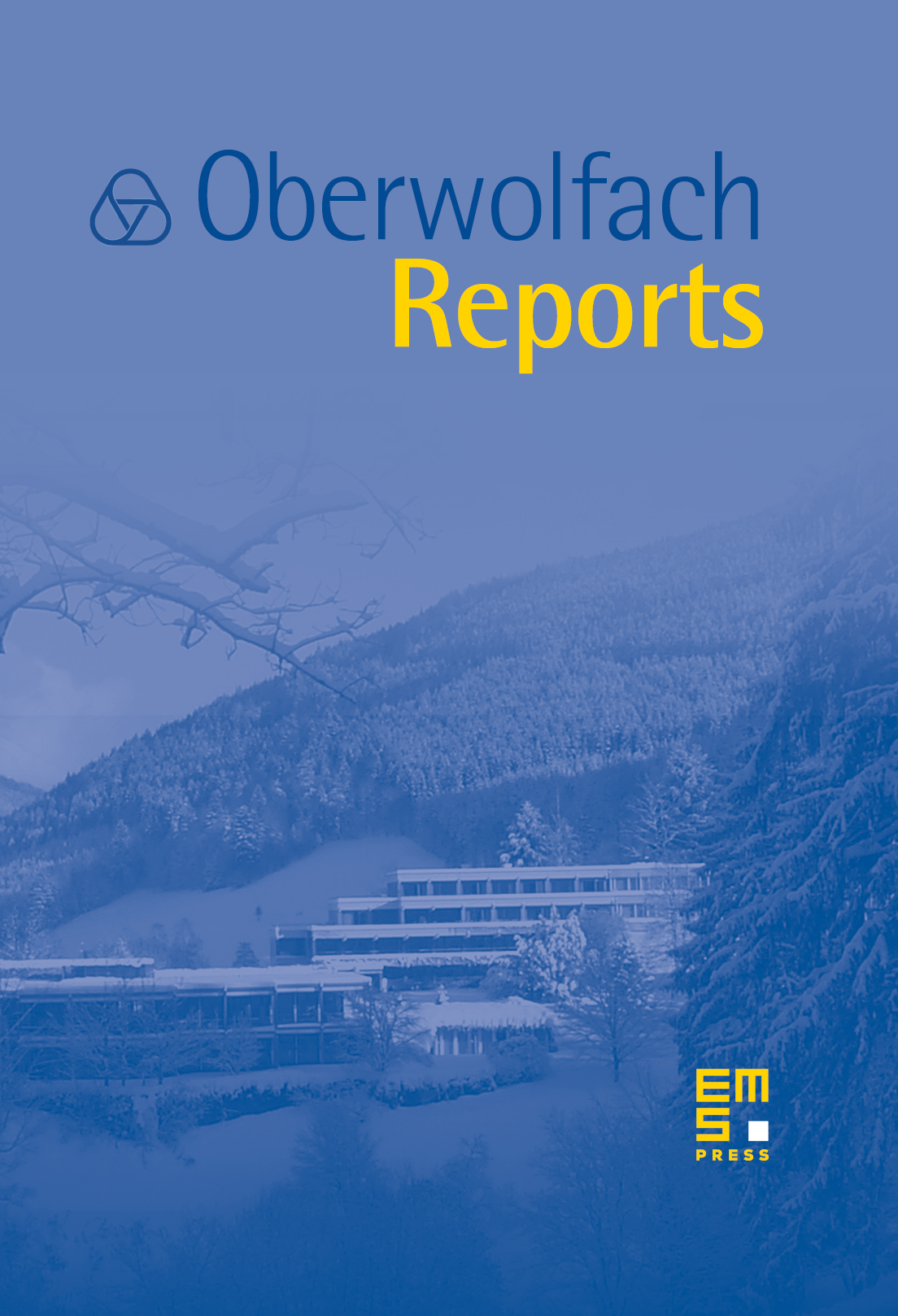Topologie
Cameron Gordon
University of Texas at Austin, USARobert Oliver
Université de Paris XIII, Villetaneuse, FranceThomas Schick
Georg-August-Universität Göttingen, Germany

Abstract
This conference was the last of six in the series of topology conferences in Oberwolfach organized by Cameron Gordon and Bob Oliver, joined for the first time by Thomas Schick as successor of Wolfgang Lück, who was organizer for an even longer time. Unfortunately, Lück could not attend the conference for medical reasons.
There were about 45 participants in the meeting, working in many different areas of algebraic and geometric topology.
The 19 talks of the conference covered a wide range of areas such as 3-manifolds and knot theory, geometric group theory, algebraic - and -theory, and homotopy theory. One of the goals of the conference is to foster interaction between such different areas and the passage of methods from one to the other.
The following is a summary of some of the highlights.
Karen Vogtmann reported on joint work with Martin Bridson, showing that the automorphism group of a free group on letters cannot act non-trivially on a Euclidean space of dimension , or on any acyclic homology manifold of dimension . This uses some delicate refinements of classical Smith theory. In a related direction, Tadeusz Januszkiewicz presented the construction of finitely generated groups with the property that the action on an arbitrary finite dimensional acyclic space always has a fixed point. This construction involves simplices of groups used together with Smith theory and a limit theorem from hyperbolic group theory. In other talks on geometric group theory, Roman Sauer described new results in Mostow rigidity, stating roughly that hyperbolic lattices can only be lattices in the corresponding ; and Clara Löh proved non-vanishing for simplicial volume of certain non-compact locally symmetric spaces.
Simon's conjecture in knot theory asserts that a knot group (i.e., the fundamental group of the complement of a knotted in ) admits surjective homomorphisms onto only finitely many other knot groups. Alan Reid talked about joint work with Michel Boileau, Steve Boyer, and Shicheng Wang, showing that this is true for all 2-bridge knots. The proof involves a skillful use of newly discovered properties of the character variety of knot groups due to Kronheimer and Mrowka. In another talk on 3-dimensional topology, Jessica Purcell addressed hyperbolic structures, more precisely the conjecture that if is a compression body with a single 1-handle attached to a torus cross an interval, then the core of the 1-handle is isotopic to a geodesic in any geometrically finite hyperbolic structure on . Insight into this problem was also gained via computer aided simulation and visualization.
As one application of homotopy theory, Ib Madsen presented an integral refinement of the Riemann-Roch theorem for curves (with suitable twist bundles). This work was based on precise calculations of the homotopy effect of associated maps on the classifying space level.
Another application of homotopy theory was described by Carles Broto. He presented a purely algebraic result about the -subgroup structure in finite groups of Lie type, one which was reduced to a statement about their classifying spaces and then proved using the homotopy theory of -local finite groups. No algebraic proof of this result is available up to now.
Kuhn's realization problem in unstable homotopy theory asks which abstract graded rings over the field , with a compatible action of the Steenrod algebra, are isomorphic to cohomology rings of spaces. Kuhn gives precise conditions which he conjectures to be necessary and sufficient, and his conjecture had already been proven when . In Gerald Gaudens' talk, an important special case of the conjecture was proved for odd primes.
Other talks addressed a new homological approach (via so-called blob homology) to topological quantum field theory, the failure of a possible generalization of the Madsen–Weiss theorem to higher dimensions (shown using calculations of family indices), the rigidity of the curve complex of a surface and the construction of exotic smooth structures on 4-manifolds via suitable surgery methods.
The famous Oberwolfach atmosphere made this meeting another wonderful success, and all thanks go to the institute for creating this atmosphere and making the conference possible.
Cite this article
Cameron Gordon, Robert Oliver, Thomas Schick, Topologie. Oberwolfach Rep. 5 (2008), no. 4, pp. 2419–2476
DOI 10.4171/OWR/2008/43